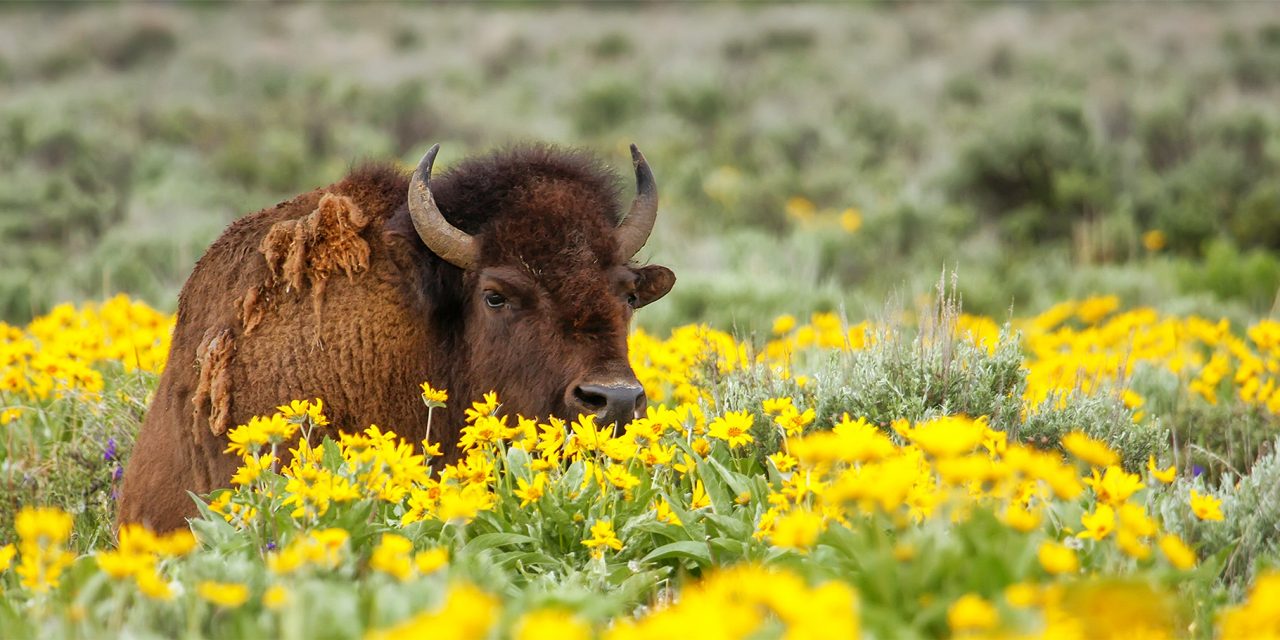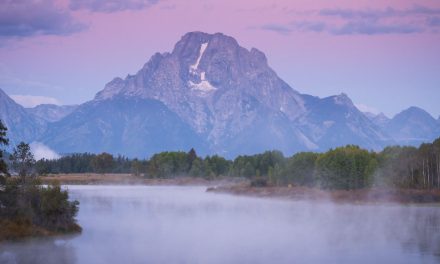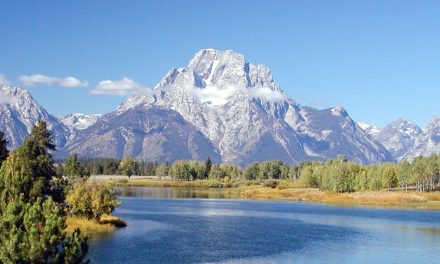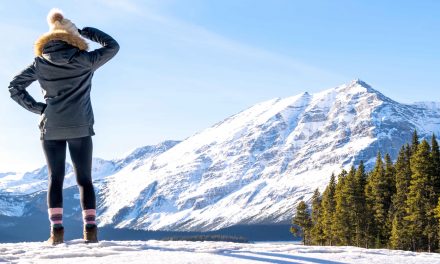It was August 1804 when the Lewis and Clark Expedition reached the eastern edge of the Great Plains. What lay before them was a broad expanse of North American flatland, one covered in prairie and steppe grasslands, stretching west of the Mississippi River and east of the Rocky Mountains, and teeming with wildlife.

Journal Entry by William Lewis, 1806
There were grazing elk and pronghorn, as well as hundreds upon thousands of bison. The men often caught sight of the latter feeding in the hills and plains, and across what Lewis referred to as “boundless pasture.” Anywhere from 30 million to 60 million bison roamed the Great Plains in the early 1800s, a number that seemed almost inexhaustible. But just a century later, they were nearly gone.
Throughout the decades following the Lewis and Clark Expedition, European settlers hunted these bovines to near extinction. Trappers and traders profited from their fur and leather. The U.S. government exterminated them as a way to limit the power and range of Native Americans, who depended on bison for substance. And professional hunters wiped out hundreds of bison at a time for sport. Settlers and railroad companies considered them a nuisance and found ways to eradicate them. By 1889, only 835 wild bison remained, with another 200 protected within Yellowstone National Park and 256 in captivity.

Mountain of bison skulls, 1892
Thankfully, the number of bison raised as livestock and living in U.S. public and private herds has since increased to the hundreds of thousands. However, according to the National Park Service, their Great Plains ecosystem—which was once North America’s most expansive biological community, spreading more than 170 acres across the central U.S. and western Canada—has “been reduced to one of the rarest and most endangered ecosystems the world over.” Its steep loss and land fragmentation threaten the plains’ biodiversity, as well as the lives of its native species—including bison—and the many communities that depend on the land for their livelihood.
More about North America’s Grasslands

© Megan Brief
While rainforests and coral reefs are often at the forefront when we talk about threatened ecosystems, North America’s grasslands are some of the most in peril habitats on the planet. More than 70 percent of the continent’s tallgrass, mixed-grass and shortgrass prairies have succumbed to things like agriculture, energy development and poor grazing practices. This includes approximately 2.6 million acres of the Great Plains from 2018-2019 alone. That’s an area greater than Yellowstone.
Grasslands not only play an essential role in biodiversity, but they help sustain the lives of millions of people, including Native nations, ranchers and farmers, as well as the rural communities that reside there. They store carbon underground, which in turn lessens the effects of climate change, and they play an essential role in the protection of water and soil. Grasslands also provide critical habitat for a diverse array of wildlife, including birds and pollinators, black-footed ferrets and greater sage-grouse, as well as wild bison.
The North American Grasslands Conservation Act

© Kurt Johnson
The question remains: just how do we stop our grasslands from disappearing and instead, save and maintain them for future generations?
This past July, U.S. Senator Ron Wyden (with co-sponsorship from Senators Amy Klobuchar of Minnesota and Michael Bennet of Colorado) introduced the North American Grasslands Conservation Act. Similar to the North American Wetlands Conservation Act, which has helped to fund thousands of projects protecting over 26 million North American acres of wetland and wildlife habitat since its passing in 1989, the North American Grasslands Conservation aims to protect and restore the continent’s iconic grasslands through empowering ranchers, farmers, Native nations, and rural communities with incentive-based initiatives to conserve, restore, and protect grassland ecosystems.
Nat Hab’s exclusive travel partner, World Wildlife Fund, is working in unison with more than a dozen of North America’s leading conservation groups, including Land Trust Alliance and the First National Development Institute, to help turn this newly proposed legislation into law.
Since approximately 85 percent of North America’s grasslands are privately owned, this voluntary, science-based program will be land-owner driven, providing funding to restore our prairies, savannas and glades to their full potential, while preventing additional loss of grassland and sagebrush wildlife in the process.
Why Bison Matter

© Kurt Johnson
Bison are a keystone species and an essential component of prairie landscapes, impacting large areas of the prairie ecosystem as they roam. In fact, a newly published study in the journal Proceedings of the National Academy of Sciences shows that freely grazing bison have increased native plant species diversity in tallgrass prairies by 86 percent(!) over the last 30 years.
By practicing selective grazing, bison may feed in one area while leaving another area virtually untouched, leading to a richer variety of plant life within prairie ecosystems. They spread nutrients through their waste, spurring the growth of vegetation for other wildlife to enjoy. While wallowing (which is basically rolling around on the ground in “dust baths” to do things like scratch itches and remove their winter coats), bison also create depressions in the ground. These depressions then collect rainwater, becoming mini wetlands supporting flora that otherwise wouldn’t exist in the area.
For more on how restoring native species to the Great Plains is essential to biodiversity, don’t miss Nat Hab’s Daily Dose of Nature: Restoring Native Species to the Northern Great Plains.

Ranger David Knighteagle playing a traditional Lakota Sioux flute
Bringing Buffalo Back to Native Lands
The bond between many Native nations and bison (which they also call buffalo) is a sacred one. In fact, bison have been an integral part of Native culture for millennia. Native communities utilize their meat for food, use their hides as clothing and for shelter, and carve their bones into weapons. Bison also play a large role in folklore. Returning bison to Native lands will give Indigenous peoples an opportunity to reclaim their food sovereignty, not to mention their culture, health and overall identity.
In an effort to regenerate the ecosystem of the Siċaŋġu Lak̇ota nation, the Rosebud Economic Development Corporation (REDCO), along with support from World Wildlife Fund and Rosebud Tribal Land Enterprise (TLE), have created the Wolakota Buffalo Range project. Located on the land of the Sicangu Lakota Oyate, also known as the Rosebud Indian Reservation, in South Dakota, the project aims to establish a herd of 1,200 bison on the Wolakota Buffalo Range, a nearly 28,000-acre native grassland. The range welcomed its first 100 bison in October 2020, and once reaching its goal, Wolakota will be North America’s largest bison herd owned and managed by Native Americans.
In fact, WWF is working with Native communities across the Great Plains to help restore bison to their lands. They’ve committed to supporting the establishment of five herds, totaling at least 1,000 individuals each, by 2025. The variety of herds helps establish genetic diversity and a healthier ecosystem, while the bison themselves provide a nutritious source of protein for school children, families, and cultural ceremonies and events.
By maintaining North America’s grasslands today, we can ensure a rich and sustainable prairie ecosystem for those who come later.

© Jeremy Covert



































